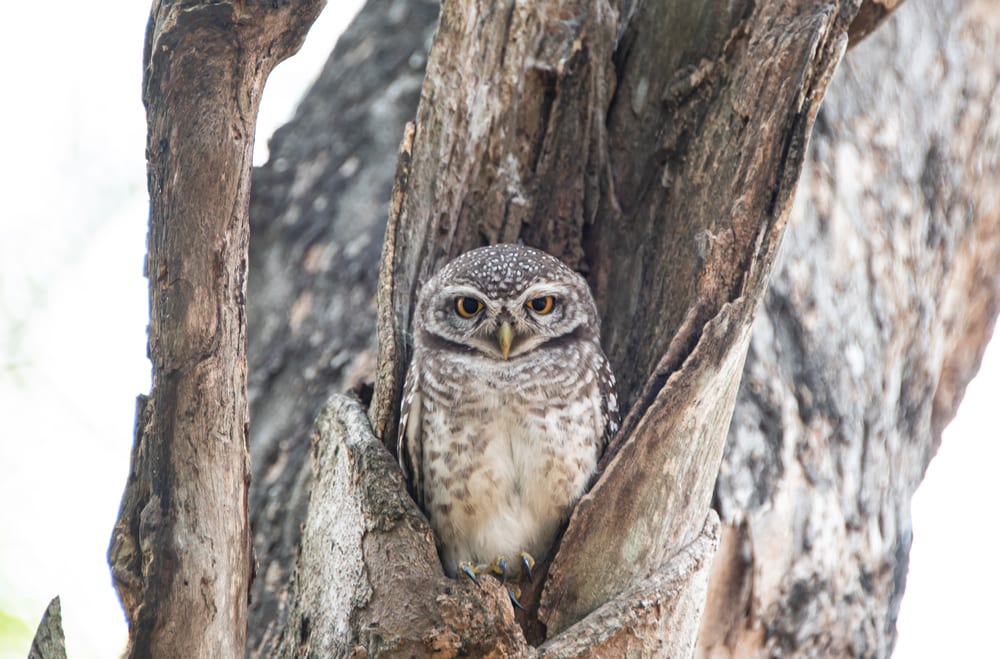Outforia Quicktake: Key Takeaways
- Elf owls are the smallest and lightest owls in the world, with a wingspan of 10.5 inches (27 cm), and they weigh about 1.4 oz (40 g).
- They are found in Southwest America, central Mexico, and Baja California Peninsula, preferring warm places, temperate, and tropical climates.
- Their diet primarily consists of insects, but they also prey on small mammals, lizards, birds, and snakes.
- Elf owls are nocturnal, solitary, and extremely territorial creatures, with males and females forming pairs during breeding, migration, or mobbing predators.
- The conservation status of elf owls is listed as least concern, but their numbers are declining due to habitat loss, human activities, and predation by snakes, coyotes, jays, and hawks.
Despite being the smallest owl in the world, this type of owl adapted well enough to thrive until today. The elf owl is known for its brown coat providing easy camouflage. It uses its coat to pretend as a broken branch or hide inside a tree’s hollow.
They fly silently, which barely gives prey a chance to escape. But did you know they also fake death to avoid predators? These unusual elf owls exhibit outstanding skills, which make them unique. Continue reading to find out what else they can do!
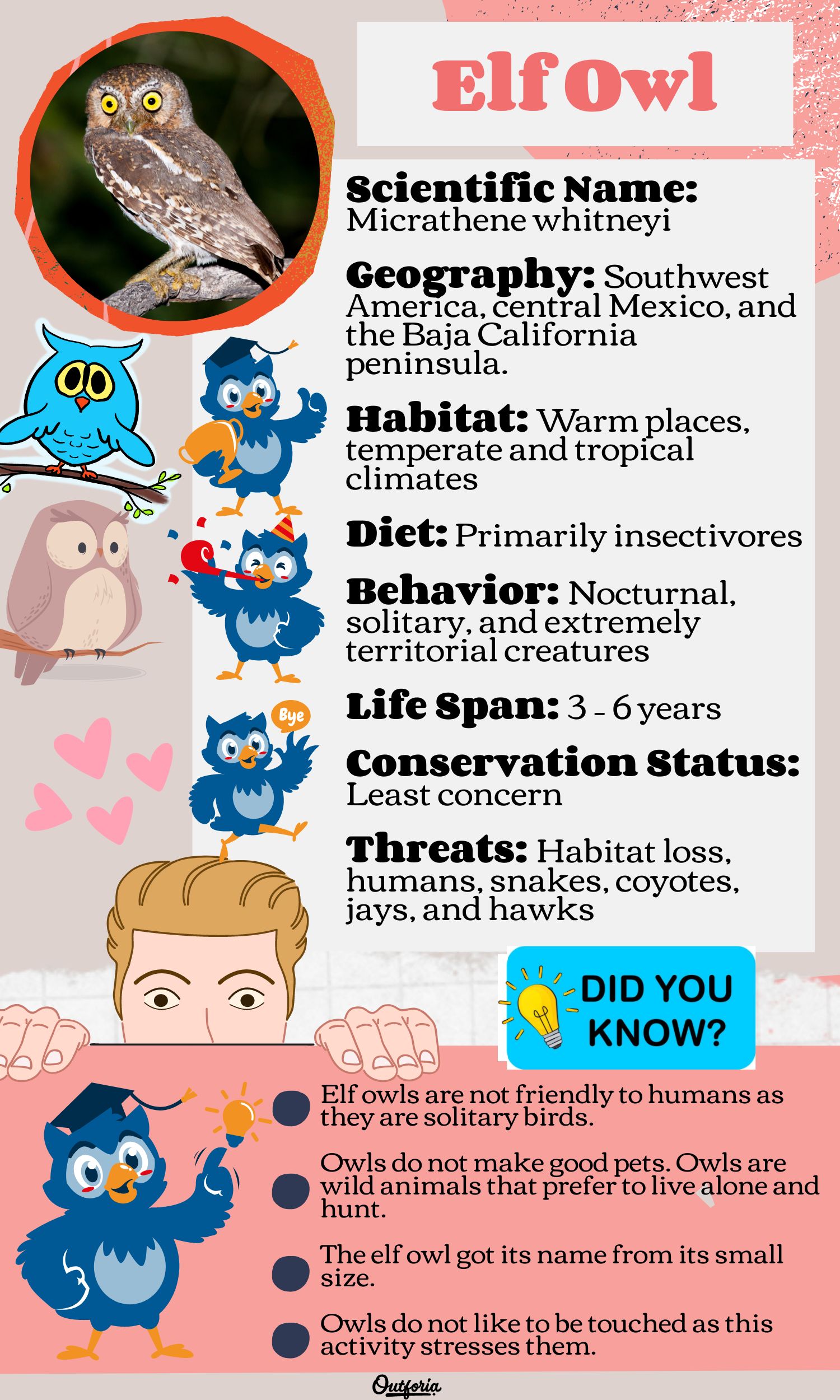
Share This Image On Your Site
You May Also Like: 12 Majestic Types Of Owls In Texas
Classification
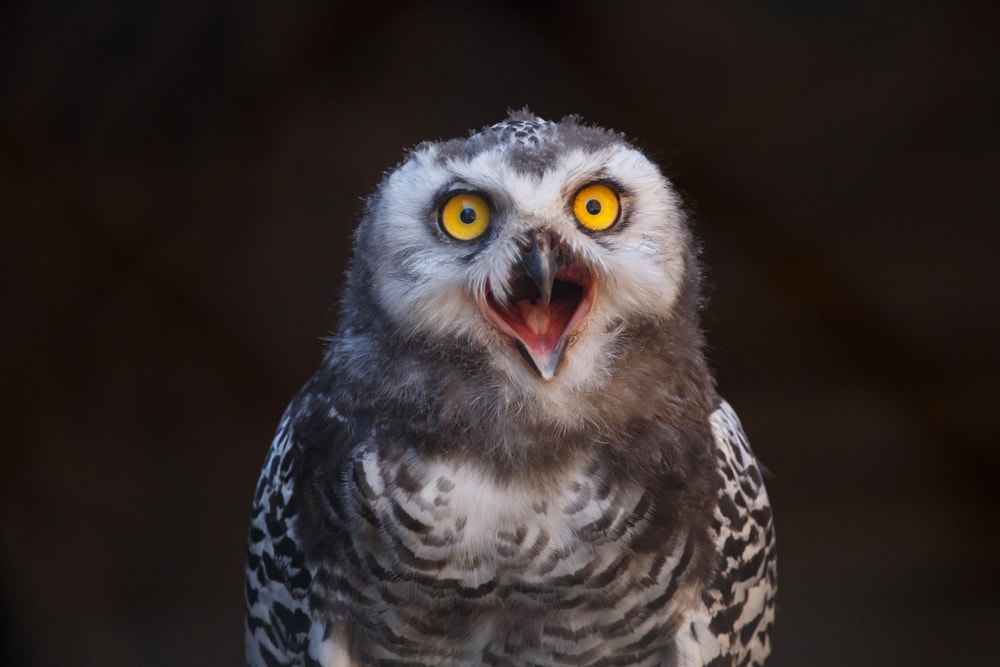
The elf owl belongs to the Micrathene genus in the Strigidae family. Its scientific name is Micrathene whitneyi.
It was initially named Whitney’s owl to honor the late geologist Josiah Whitney. Micrathene combines the Greek word mikros, which means small, and Athene.
Whitneyi is the Latinized word formed from Josiah’s last name. This tiny owl has many other names, including Texas elf owl, Sanford’s elf owl, and dwarf owl. Scientists recognize four subspecies:
- M. w whitneyi – found in southwest US and Mexico.
- M. w. Idonea – resident in southern Texas. Its range is from Texas to Mexico.
- M. w. sadfordi – resident in South Baja, California.
- M. w. graysoni – resident in Socorro Island, Mexico
Appearance and Size
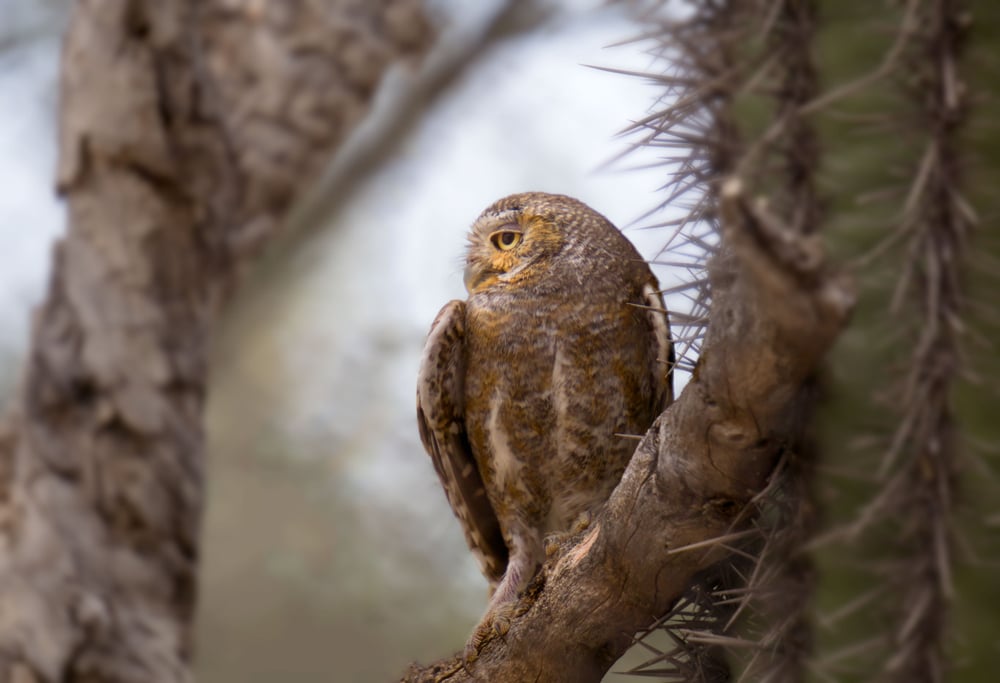
The elf owl is the smallest known raptor and is about the size of a sparrow.
It’s so tiny that you can barely feel it in your hands, weighing about 1.4 oz (40 g). They are up to 5.7 inches (14.5 cm) long, and their wingspan reaches 10.5 inches (27 cm).
Their general coloring is either brownish or grayish variations. This owl seems to spot a more brownish tint on the backside and a more orange take on the head. Their faces are pretty peculiar.
The eyebrows are strikingly white on a brownish oval disc. The eyes have a pale yellow color. Their unique features include no ear tufts or feathers on their heads. Males and females are very similar, with females being 3% longer and 6% heavier.
Their legs are pretty long compared to their body size, and they have sharp claws for catching prey. The bill is gray with a yellow horn tip. Don’t let its size fool you. It’s still a determined predator!
Geography, Distribution & Location
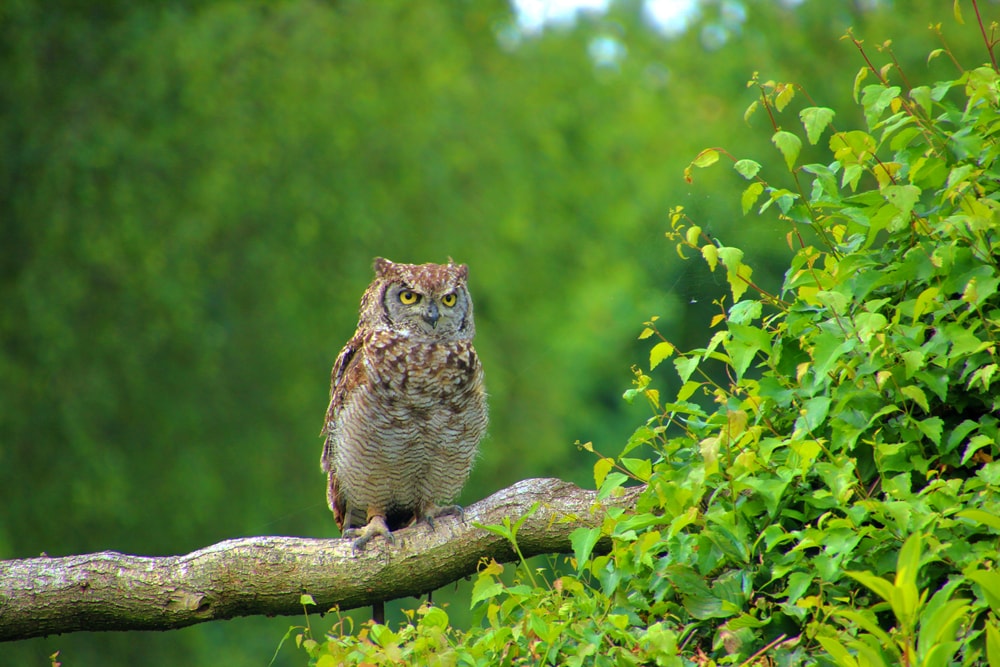
The elf owl’s ranges are in southwest America, central Mexico, and the Baja California peninsula.
The elf owl is a migratory bird that usually flies in large groups. In the spring and summer, it migrates to the southwest United States. You can find it in California, Arizona, New Mexico, and Texas for breeding.
It goes to southern Mexico in the wintertime. Then, from mid-April, migrant elf owls go back to the north. The non-migratory population lives in Puebla in East-Central Mexico and southern Baja California.
Habitat and Climate Zones
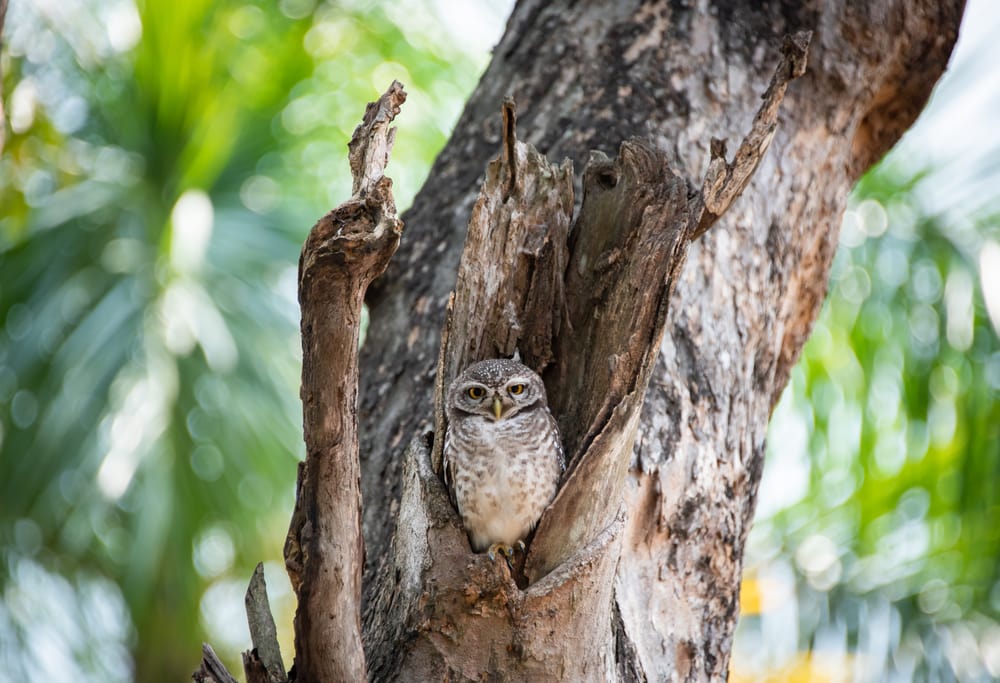
This tiny owl likes to stay in warm places and temperate and tropical climates. You can spot them in saguaro deserts, canyons, plateaus, chaparral, and woodlands near water. They can also live on mountain slopes up to 7,200 feet (2,200 m).
They like arid deserts with plenty of cacti, favoring the saguaro cacti for homes. However, some owls manage to live in urbanized areas as well.
You May Also Like: 10 Fascinating Desert Birds And Their Unique Adaptations
Diet
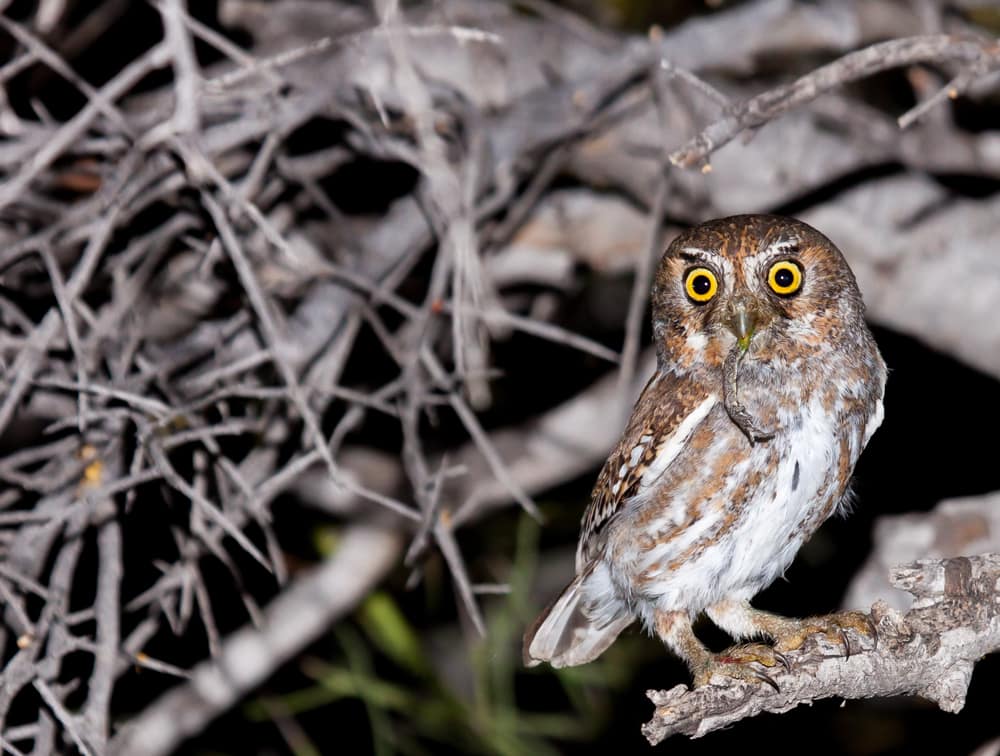
Elf owls are primarily insectivores. They feed on moths, spiders, grasshoppers, beetles, locusts, and cicadas. They’re also carnivores and prey on small mammals, lizards, birds, and snakes.
They usually catch prey in flight or pluck them up from trees or the ground. If they go for larger game, they carry it to a perch, rip it to shreds, then eat it. Since they get all their nutrients from meals, elf owls don’t drink water.
Behavior
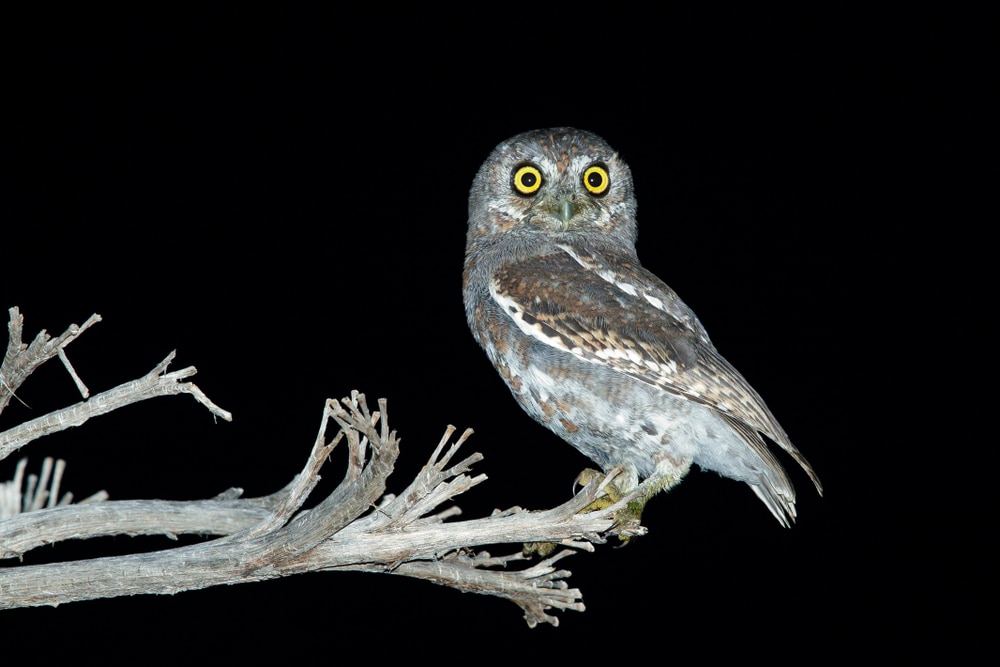
As nocturnal creatures, they mostly hunt at night. During the day, they stay in their cacti, using its shade to protect them from the hot weather.
Elf owls have excellent night vision and can see in low light. Like other owls, they have great hearing and can pinpoint their prey’s location.
They are solitary birds. They only stick together when breeding, migrating, or mobbing predators.
Elf owls are extremely territorial. Males decide on the perimeter where both males and females defend it. When a pair gets formed, the male becomes overly protective of the female and treats her as his territory. The birds also use singing to defend their territories.
These intelligent birds play dead when they get picked up. It makes the predator relax its grip, allowing the owl to escape.
Elf owls are highly vocal creatures. Males make loud advertising and courtship calls. These calls sound like repetitive “whi-whi-whi-whi” sounds throughout the night. This sequence has 5 to 20 notes, and a shorter version is used to attract females to nests.
The female makes a short “peeu” sound for the male to locate her. Both genders make a sharp “cheeur” sound when they get spooked. Chicks make rasping calls to express hunger.
Mating
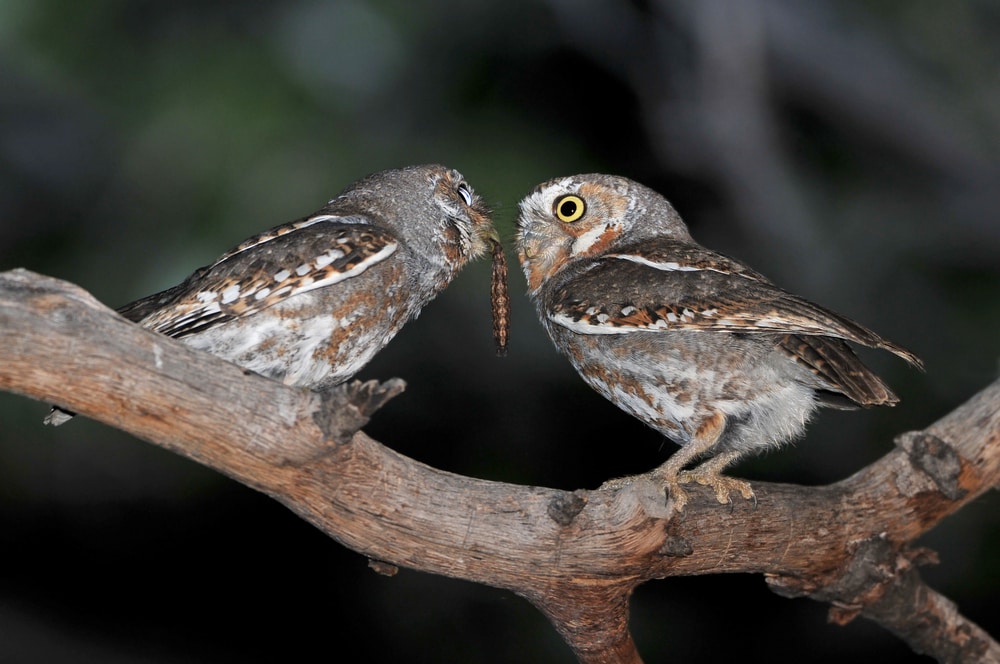
Elf owls are primarily monogamous, remaining with the same pair for life. However, some owls are serially monogamous. This means they stay together only for the breeding season. Then, they find another mate in the following year.
These owls usually breed once per season. But, if the nest gets destroyed, they might produce a second clutch. Nesting begins in April and ends in July.
The courtship season is exciting. First, males try to attract females to their nest cavities by calling them. When a female approaches, they go out of the hole and start singing.
The female chooses her partner based on the nest’s look. Nesting sites are typically north-facing woodpecker cavities. These cavities are built in saguaro cacti, sycamores, and other hardwood trees. They like to have the nests 10 to 33 feet (20 to 70 m) above the ground.
The mating period lasts three months, and both partners remain near the nest. But, first, both sexes forage independently. Then, the male hunts for the female when she remains in the nest.
Life Cycle and Lifespan
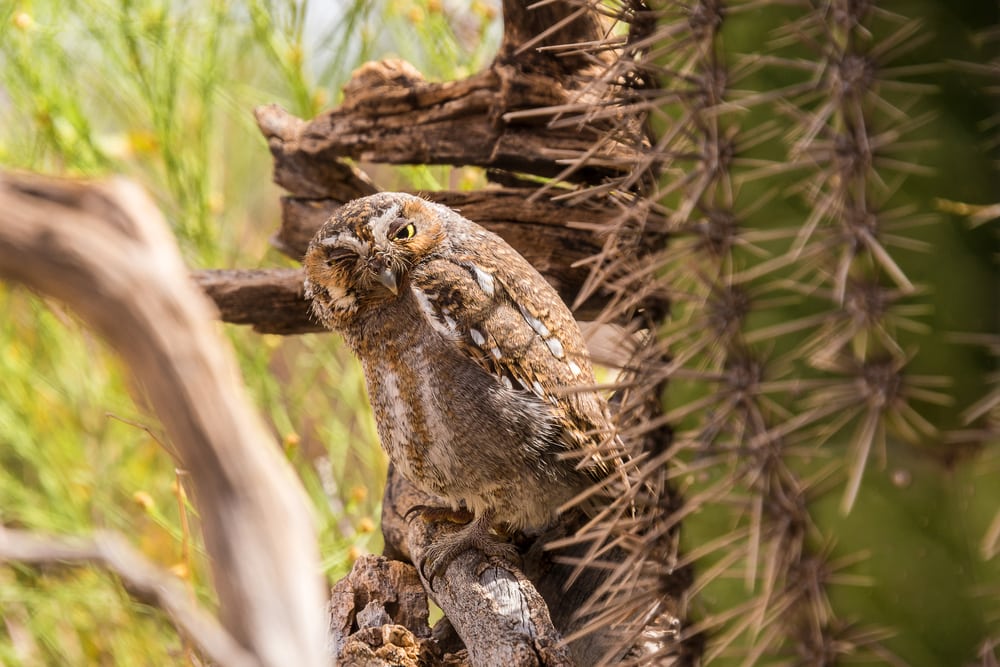
The female lays between 1 to 5 eggs in the springtime, and incubation lasts 24 days.
In general, elf owls are non-aggressive. However, nesting owls, along with their partners and neighbor elf owls, can gang up on predators approaching the nest. They use singing to alert each other of the impending danger.
Chicks hatch in mid-June, gaining vision at around six days old. At 12 days old, they can snap their beak. The male parent hunts during this time and provides food for his family. When the chicks are three weeks old, the female can go hunting.
They become fledglings at three months old. By the time they’re four months old, they look like adult elf owls. They usually reach sexual maturity when they’re one year old.
The lifespan of a wild elf owl is somewhere between 3 to 6 years. However, they can live up to 10 years in captivity. This is because they aren’t threatened by natural elements like predators.
You May Also Like: The 7 Types Of Owls In Florida: Chart, Images & Facts
Population
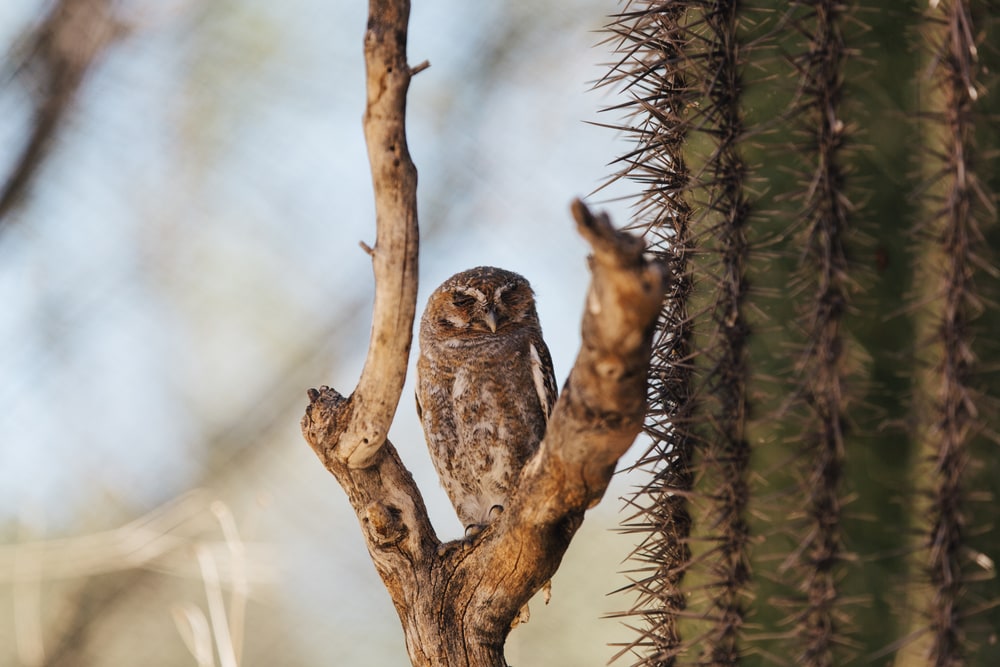
According to the American Bird Conservancy, there are less than 150,000 elf owls. They also list this species as endangered in California.
Conservation Status
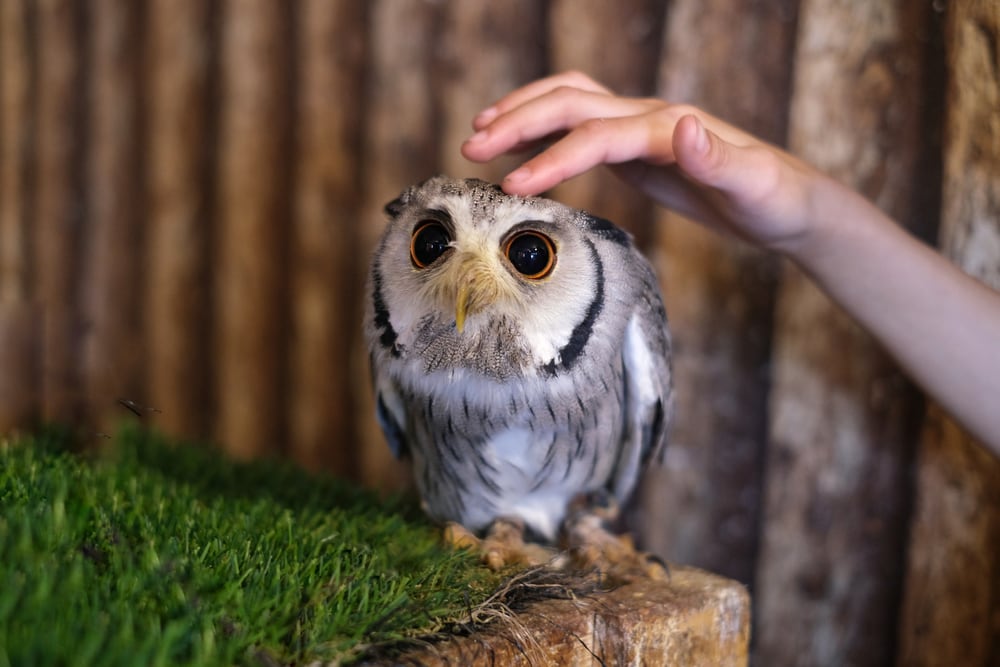
According to the IUCN red list, the elf owl is listed as least concern, but its numbers are declining. The Socorro elf owl has been missing since 1931, so it is believed to be extinct.
Threats and Predators

Their main threats are habitat loss, primarily near the desert areas of California. Home building and water diversion are a few ways their habitats are destroyed. As a result, they no longer have places where they can nest, hunt, and reproduce.
While some have adapted to living in urban areas, there are conservation efforts to increase their numbers. Captivity breeding and building bird boxes are a few ways of increasing their numbers.
Apart from human threats, elf owl predators include snakes, coyotes, jays, and hawks. They also compete for food with other owls.
Ecological Role
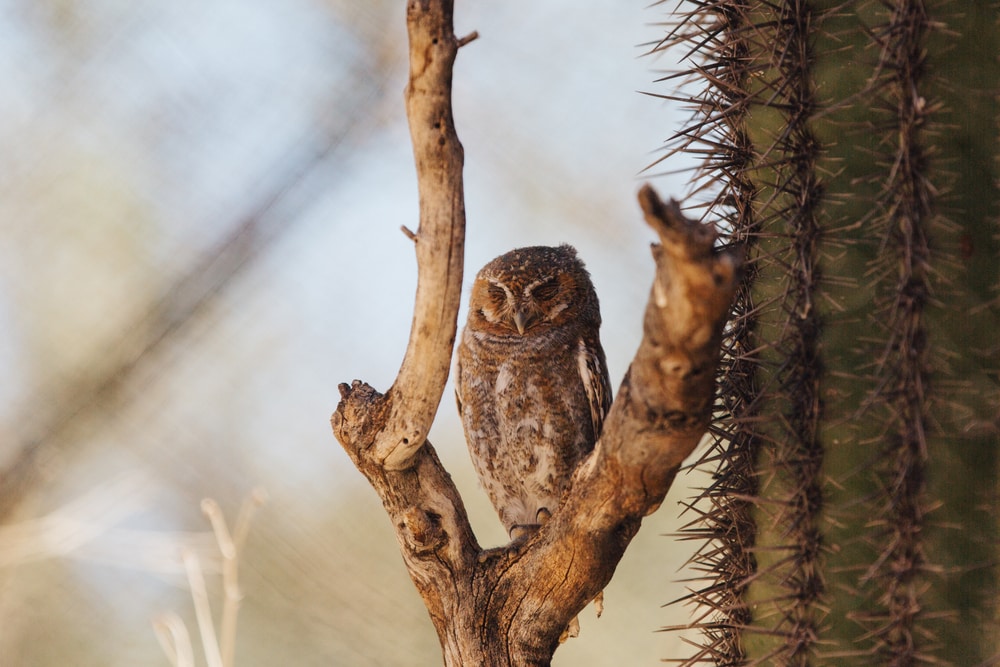
Elf owls play an essential role in their ecosystem. They control the population of their prey, like insects and small mammals. They also provide sustenance for their predators.
Elf Owls and Thread Snakes
Elf owls have unique behavior. They usually catch thread snakes or blind snakes alive and bring them to their nests. Then, the snakes eat the parasites that could harm the nestlings. These parasites can be bugs, ants, termites, or larvae.
Scientists conducted a study on this interesting behavior. They noticed that chicks with thread snakes as roommates grow faster. They also have better chances of surviving their first months.
It’s a compelling case of species partnering together for their survival. Although sometimes the chicks eat the snakes.
Elf Owls in Fiction

The world of fiction is no stranger to elf owls. Legend Of The Guardians: The Owls Of Ga’Hoole is a 2010 animated movie about owls and their magical adventure. The main character is Soren, a barn owl who gets captured by army owls to do their bidding.
Soren becomes friends with an elf owl named Gylfie. In the film, the two owls are hypnotized by staring at the moon. They help each other stay awake and, after some misfortune, fly away to find the Guardians of Ga’Hoole.
While the movie is cute and entertaining, some owls aren’t represented accurately. Gylfie is a nocturnal animal. Therefore, she wouldn’t easily fall asleep from seeing the moon. This owl is primarily active during the night when it does most of its hunting.
Gylfie is also not drawn as an elf owl; she mostly looks like a pygmy owl. In the movie, she was hatched in a cactus in the desert, which accurately represents this species.
Fun Facts
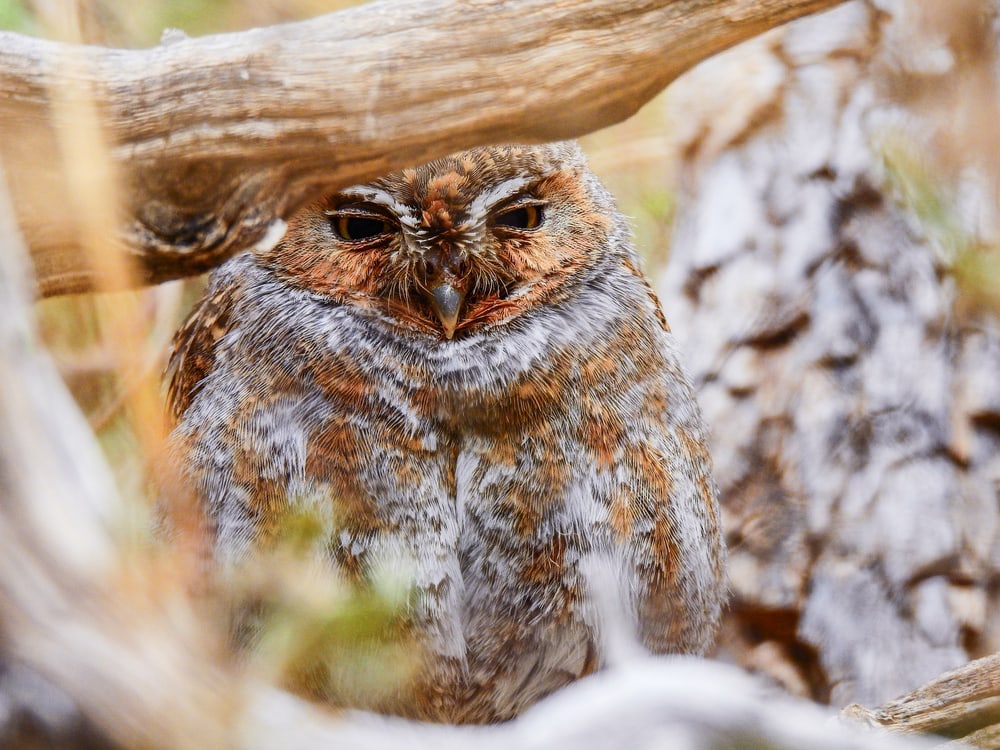
Scientists observed that elf owls eat scorpions. They do this by removing the stinger before ingesting them.
The elf owl is the lightest in the world and, simultaneously, the smallest.
A group of elf owls is called a parliament. C. S Lewis invented this word in The Chronicles of Narnia. The book was so popular that the term became widely recognized.
Elf owls can turn their heads 270° because they cannot turn their eyes. This is due to the eyes being locked in bony eye sockets. This means they cannot move them; instead, they need to move their heads.
FAQ
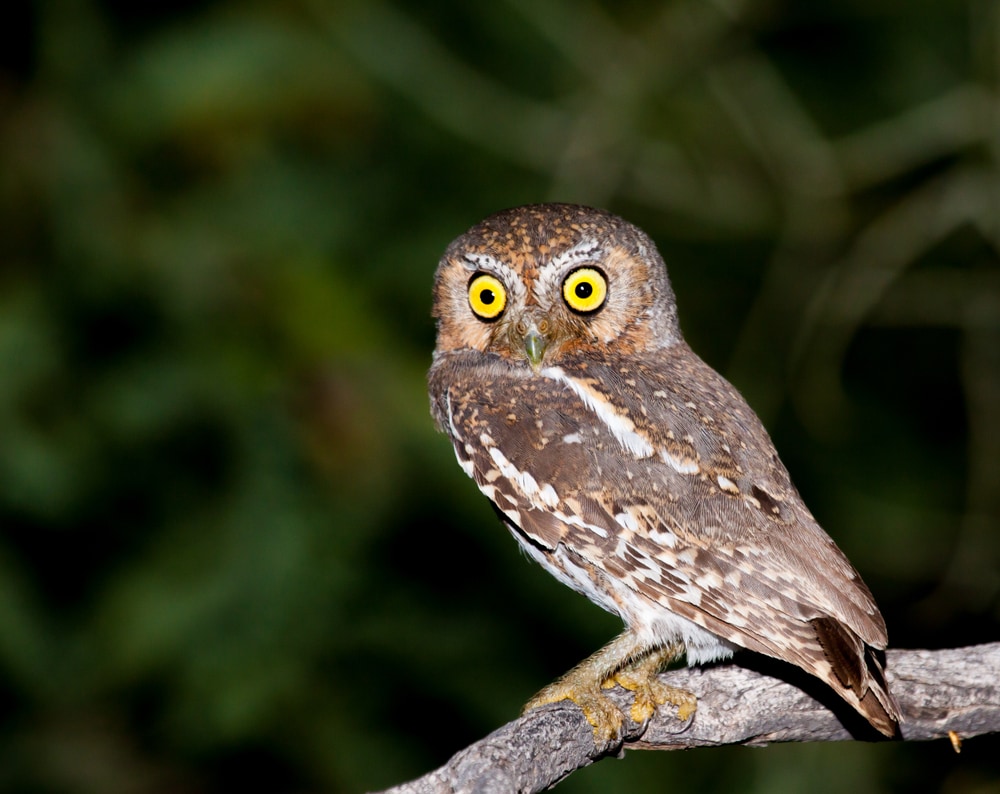
Why is it called an elf owl?
The elf owl got its name from its small size. Elves are tiny, supernatural beings from Germanic mythology.
Are elf owls friendly to humans?
Elf owls are not friendly to humans as they are solitary birds.
Can you own an elf owl as a pet?
Owls do not make good pets. Owls are wild animals that prefer to live alone and hunt. In addition, they have long claws and pointy beaks that can injure humans.
Do owls like being pet?
Owls do not like to be touched as this activity stresses them. Sometimes, simulating preening can be the only behavior that wouldn’t get the owls too stressed.
Do owls recognize faces?
Studies suggest that owls can recognize human faces and differentiate between their voices.



